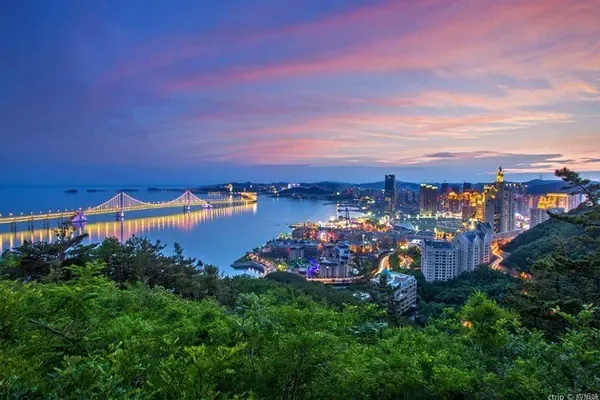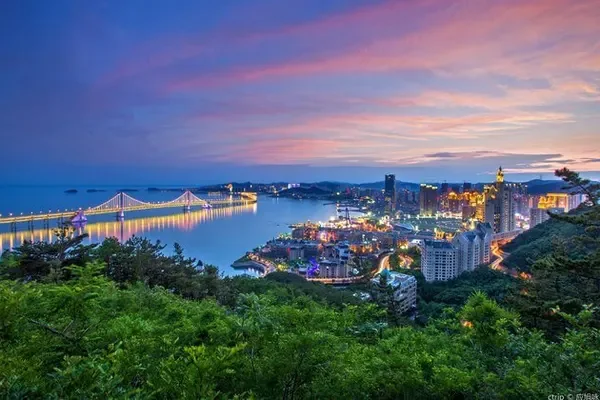For Ningxia, I believe that many people are not deeply involved, know little about it, but yearn for a long time. The history of Ningxia begins with Shuidonggou! Human beings lived here 40,000 years ago. I think, to understand a city, one must understand the story behind it. Ningxia trip, let’s start from Shuidonggou——

Shuidonggou, a place worthy of praise. Only those who have been there know that there is such a good place. History and culture, customs, games and entertainment, performances, natural beauty. There are also various traffic experiences that are amazing.
So where is the water hole? How to go?
Shuidonggou Ruins Tourist Area is located in Linhe Town, Lingwu City, Ningxia, 19 kilometers away from Yinchuan City in the west, 30 kilometers away from Lingwu City in the south, and 11 kilometers away from Hedong Airport. , is the link connecting Ningmeng tourism, covering an area of 14.4 square kilometers.
If you choose to drive by yourself, the following routes are available:
A. Departure from Yinchuan→Great Unity Square→East of the Second Yellow River Bridge→Auxiliary Road of Yinqing Expressway→Shuidonggou
B. Departure from Yinchuan → Great Unity Square → Yinqing Expressway → Shuidonggou Exit → G244 National Highway (formerly S103 Provincial Highway) → Shuidonggou
C. Depart from Yinchuan→Beijing Road→Binhe Yellow River Bridge→Turn right on New Provincial Highway 203→Turn left on Shuidonggou Tunnel→G244 National Highway (formerly S103 Provincial Highway)→Shuidonggou
D. Etuokeqianqi → Sulidixi Street → Aoyin Line → enter X102 → Shuidonggou

Shuidonggou scenic spot opens at 8:00 am. Passing through the majestic gate, you will see the uniquely shaped Shuidonggou Site Museum. Through the detailed introduction of the narrator, we learned that after 93 years of archaeological excavation and research work, a large number of Paleolithic cultural relics and precious prehistoric materials, paleontological fossils and stone tools have been unearthed in Shuidonggou, which proves the existence of prehistoric times in China. As a result, Shuidonggou became the earliest ancient human cultural site discovered in the Paleolithic Age in my country. It caused quite a sensation in the archaeological circle at that time. Many scholars and experts came here just to explore this birthplace of Chinese prehistoric archaeology.



There is a 15-minute live experience in the museum, which tells the story of a group of primitive people migrating hard against the icy cold wind. They climbed over the sand dunes, bypassed the soil forest, and came to Shuidonggou. They put down their bags and started a new life on the spot. However, soon, disaster struck, and the surviving people started their migration journey with their old and young...


On the north side of the museum, there is a rather quaint little shop called "Zhang San's shop". The owner is a young man who once poured water and served meals for two French archaeologists. Later the French left, and Chinese archaeologists came again. When Zhang San was found again, Zhang San was already an old man with a gray beard... In 1920 and 1923, Belgian missionary Kent and paleontologist Sang Zhi Hua and De Rijin lived in Zhangsanxiaodian for investigating and excavating the prehistoric site of Shuidonggou. Later, Teiljin marked Zhangsanxiaodian on the map he drew, and first published their work abroad. Scientific expedition and excavation reports. Therefore, Zhangsan Xiaodian has become famous in the international paleontology circle.

Shuidonggou Village
After leaving Zhangsan's small shop, you will find the adjacent "Shuidonggou Village", which is a simulated place where the people of Shuidonggou live. finished shopping. Half of the dwellings in this "diwozi" are on the ground and the other half are underground, so they are warm in winter and cool in summer.

After passing the iconic stele, it is time to take a battery car. The distance of the battery car is very short, and the end point is the archaeological site. Here you can not only see the No. 1 and No. 2 archaeological sites, but also the research projects here: archaeological excavation, drilling wood for fire, making stone tools, etc.


There is a three-kilometer-long Reed Flower Valley in Shuidonggou Scenic Area. The reeds in the Reed Flower Valley are swaying and graceful. Walking on the path in between, intoxicated in the reeds, the mood is peaceful at the moment, with the green lake water, crisp birdsong, and beautiful scenery. The picture is a good place for leisure and entertainment.


Shuidonggou also preserves the complete ruins of the Ming Dynasty earth-rammed Great Wall. The Ming Great Wall separated the Mu Us Sandy Land and Shuidonggou Scenic Area, and also separated Ningxia and Inner Mongolia. The north of the Great Wall belongs to Ordos, Inner Mongolia, and the south of the Great Wall is in Yinchuan, Ningxia. Land boundary, here you can see the unique western scenery, the wilderness is in the north, the lakeshore is in the south, the feeling of seeing the whole world at a glance, only here! In the Shuidonggou Tourist Area, you can take a leisurely stroll at the foot of the Great Wall of the Ming Dynasty, or board the newly built Great Wall Observation Deck, and cross two provinces with one foot. Standing on the Great Wall and looking around, the Mu Us Desert in the north has a strong desert style in the Northwest, while the Shuidonggou Lake Wetland and Gaoxia Pinghu in the south show the beauty of the south of the Yangtze River.


After crossing the Great Wall of the Ming Dynasty, this place belongs to the realm of Inner Mongolia, where you can see the unique Mongolian style, and you can also experience exciting entertainment such as riding camels and desert surfing vehicles.


Hongshan Lake, this lake is named "Hongshan Lake" because it is located in the Hongshan area. This is the intersection of Hongshan Lake and the Great Wall. The beautiful scenery of the Great Wall on the waterfront is impressive. Take a boat tour in the lake, see the distant mountains and cliffs, the Great Wall is stunning, the sky is clear and the water is clear, and the heartbroken people are at the end of the world! In a barren gray area, mirror-like lakes and lush shrubs filled the entire ruins area, presenting a scene full of vitality under the blue sky.

After getting off the cruise ship, you will come to the entertainment venue in Shuidonggou tourist area, where you will find thrilling ziplines, amphibious chariots, fun bumper cars, archery and bubble guns, and then go to the crocodile hall to see the rare crocodiles. When you come down, you can experience the mule cart, the hoarse and high-pitched Northwest voice of the old man, a Xintianyou or hand in hand, which makes people very comfortable and relieves the fatigue of the journey.




There is also a very wide ostrich paradise in Shuidonggou, and the ostriches living in groups are very popular among tourists.

After leaving the Ostrich Paradise, I took a long camel cart, listened to the rich voice of the camel cart uncle, and soon came to the Tiange performance venue in Shuidonggou, which cannot be missed in Shuidonggou Scenic Area.

I am used to watching ancient war movies in the cinema, and here I can personally feel the magnificent scenes of historical wars. You don’t need to wear glasses like watching 3D movies in a cinema, and you don’t need to be equipped with indispensable equipment like VR technology. Shuidonggou’s "Northern Xinjiang Tiange" only needs the naked eye to feel the proper 5D effect!


Pure Mongolian professional cavalry performances, magnificent Mongolian soldiers camp; hundreds of horses, camels, yaks; and the only military sites in China: the Great Wall, the Grand Canyon, the Cave of Tibetan Soldiers, and the Red Mountain Fort. This dangerous military barrier is a real war scene... This is not a TV series, nor a movie. This is China's first large-scale real horse battle epic drama that condenses the history and nomadic culture of Xixia - Shuidonggou "Northern Xinjiang Sky" Song" performance scene!

The Grand Canyon, from Shuidonggou to Hongshanbao, is a "masterpiece" of nature. This place has become an important part of the Great Wall's "deep trenches and high fortresses" defense system. Years of wind and rain erosion on both sides of the canyon have criss-crossed ravines, and the deep loess has been washed away by long-term rain.
The earth pillars stand abruptly and have strange shapes, forming a "earth forest". They are also carved by nature to form various strange images, some of which are like monks climbing a height and looking into the distance. On the cliffs on both sides of the canyon, there are caves for soldiers built by soldiers of the Ming Dynasty, which fully demonstrates the military wisdom and ingenuity of the ancient people.

Cangbing Caves, the black holes on the cliffs on both sides of the canyon, are the famous "Zangbing Caves". The so-called Tibetan Cave is where the Hongshan Fort defenders moved from the ground to the underground to protect themselves and wait for an opportunity to attack. Or set up ambush tunnels in open areas, which is a relatively complete ancient three-dimensional military defense system in my country. This is the only place in the country, winding on the cliff.


Finally, let us take a look at the unique scenery of Hongshan Fort. The ancient city barriers and mottled walls have passed through the years and time, but they have survived forever in history!!!

The journey of Shuidonggou, a national 5A-level tourist attraction, is here. We will take you to understand this place, explore the most authentic nature, trace the traces of a long history, and let Shuidonggou leave the steps of your life!

